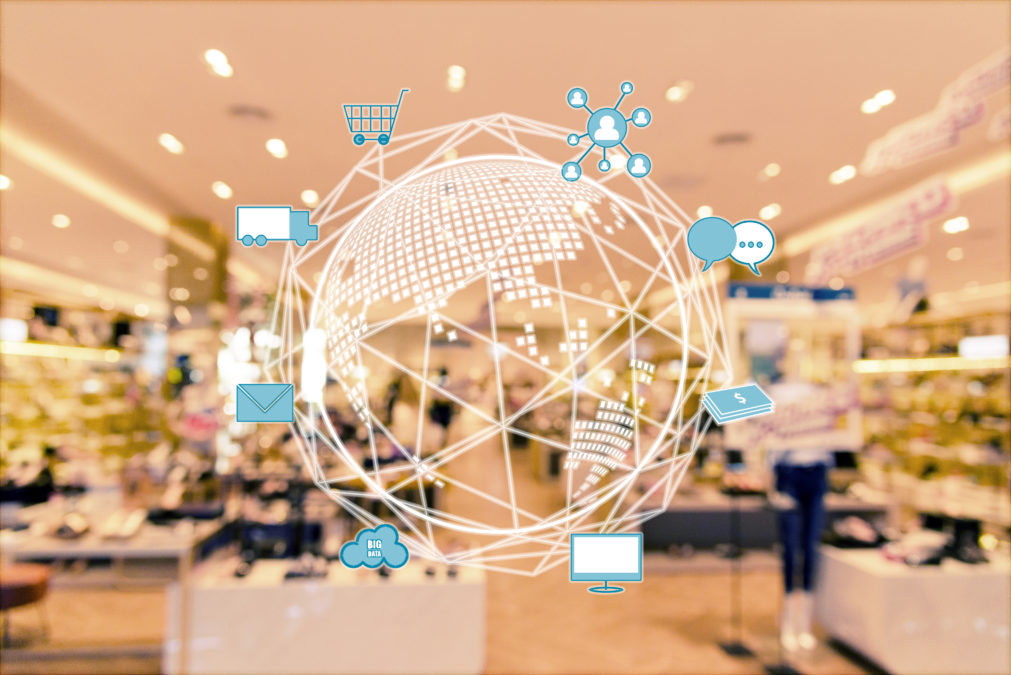An ever-increasing number of retailers are facing up to the fact that Amazon is encroaching on their territory. In recent years, for example, Amazon has spent billions on acquiring Whole Foods, and trialled ‘checkoutless’ retail concepts, as it looks to forge a path into the future of physical retail.
Since Amazon’s takeover of Whole Foods, the supermarket has been changed considerably to appeal to a broader market. With Amazon continuing to disrupt the status-quo of the retail industry, and now entering the grocery sector, adding this element should be a stark warning to traditional retailers that they need to embrace new technologies to help them win customer loyalty.
Retailers are rushing to embrace digital transformation to avoid being ‘Amazoned’
Fighting fire with fire
Ongoing disruption of the retail sector cannot continue to go unchecked: traditional brick-and-mortar retailers must find a way to unlock the full value of their existing data. If they can capitalise on insights and knowledge already held within the business, traditional retailers can act smarter and focus on core issues such as customer experience.
While traditional brick-and-mortar retailers have recognised the need to be competitive with disruptive forces, they don’t always have the processes and infrastructure and fully realise the benefits of the latest technology. They must be prepared to leave outdated processes behind and adopt a more agile, responsive and data-focused approach. The focus must be on deploying the kind of state-of-the-art services that customers now demand, putting retailers in a far stronger position to succeed in an ever-changing market.
Using data to drive physical retail success
For all the talk of online, there is still a strong desire for physical retail, with recent JDA research finding global consumers’ favourite shopping method is still in-store. However, it is also clear that while customers may not expect brick and mortar to match the levels of convenience provided by Amazon, they do expect the basics to be done well.
In the same survey, UK shoppers reported that product availability is the most crucial element for retailers to get right. This might seem an impossible task in light of the fact that consumers’ shopping habits appear less predictable than ever before; however, the good news is that retailers have access to vast reams of data, including past sales patterns and customer footfall, along with external information such as weather and public holidays.
Data science in retail: it’s as much about people as science
AI holds the key
Artificial Intelligence (AI) allows retailers to understand and analyse this data, mining actionable insights to better understand consumer demand and preferences to create better customer experiences. Innovative AI and ML solutions won’t solely make predictions and prove insight: they will also improve retailers’ replenishment and pricing optimisation through accurate real-time data. Furthermore, automation will remove the need for manual intervention which is a burden on retailers today. All of this will allow retailers to spend more of their resources enhancing customer experience, while many of the elements of a great in-store environment take care of themselves.
Making the first move
Traditional retailers need to change their outlook and become disruptors themselves, turning their back on the archaic processes and instead turn to new technologies that can change their business models. If grocery retailers are to compete with the likes of Amazon, they must drastically change their approach to data and technology.
Retailers need to begin thinking of data as one of their most important assets, something that can enable them to improve relationships with their customers, transform their supply chains and optimise their pricing, in order to compete with online competitors. The key is to make their move before it is too late: retailers must grasp the opportunity to capitalise on their wealth of data if they are to stand a fighting chance of keeping pace with customer demands.








